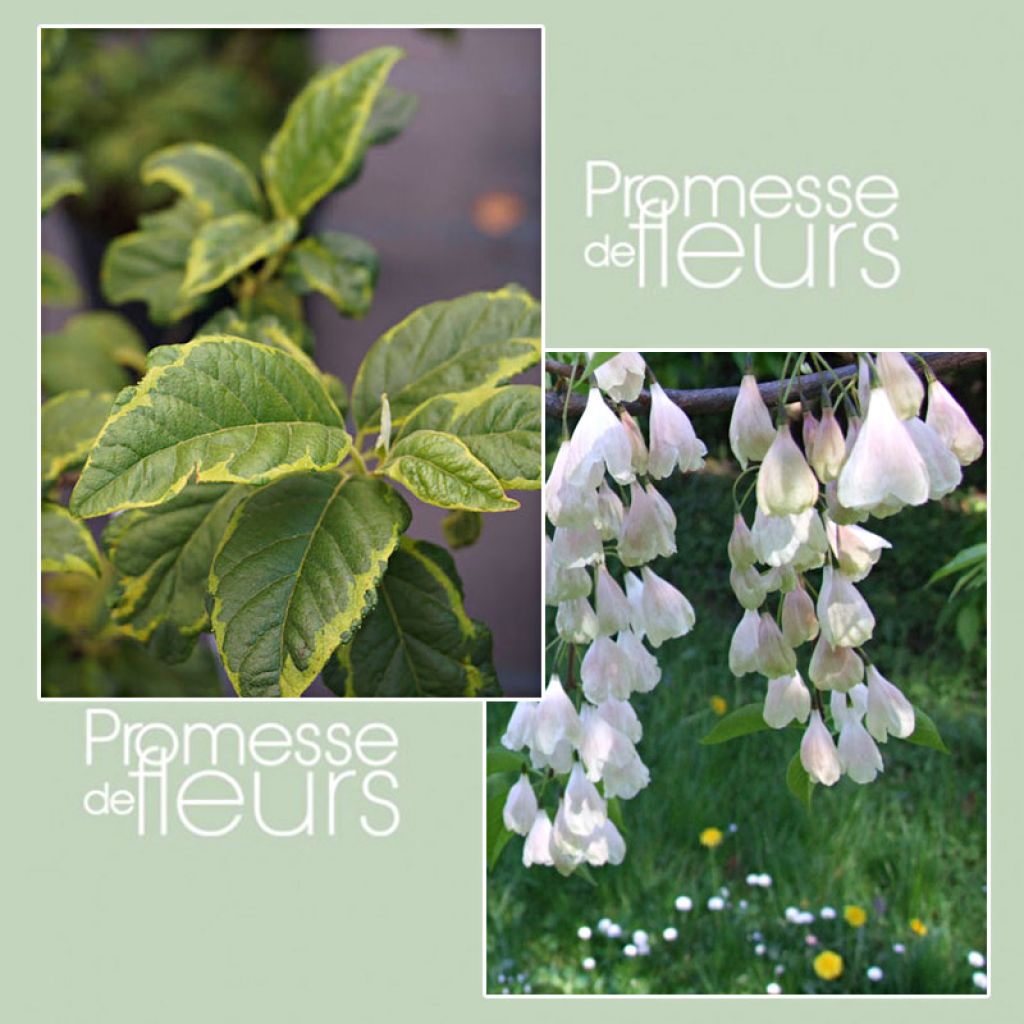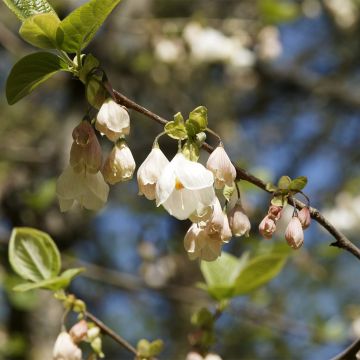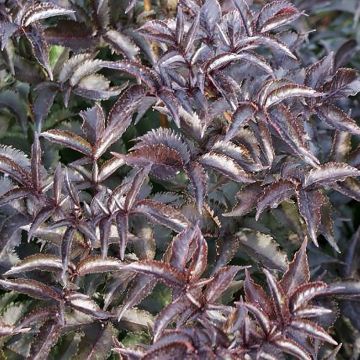

Halesia monticola Variegata
Halesia monticola Variegata
Halesia monticola Variegata
Mountain Silverbell
Parcel very well protected, with a swift delivery. Satisfied with my order.
francois, 19/01/2020
Special offer!
Receive a €20 voucher for any order over €90 (excluding delivery costs, credit notes, and plastic-free options)!
1- Add your favorite plants to your cart.
2- Once you have reached €90, confirm your order (you can even choose the delivery date!).
3- As soon as your order is shipped, you will receive an email containing your voucher code, valid for 3 months (90 days).
Your voucher is unique and can only be used once, for any order with a minimum value of €20, excluding delivery costs.
Can be combined with other current offers, non-divisible and non-refundable.
Why not try an alternative variety in stock?
View all →This plant carries a 24 months recovery warranty
More information
We guarantee the quality of our plants for a full growing cycle, and will replace at our expense any plant that fails to recover under normal climatic and planting conditions.

Would this plant suit my garden?
Set up your Plantfit profile →
Description
Superbly ornamental, very floriferous and rare, Halesia monticola variegata is a deciduous small tree, robust and vigorous, with a bushy growth habit, and its bark is veined with grey and black. It has bright green foliage, edged with creamy yellow, turning yellow in autumn. From April to May, often before the foliage appears, it is covered in abundant spring flowering, with clusters of large white bell-shaped flowers hanging from the branches. In June, winged fruits appear, reaching maturity in autumn and persisting on the tree throughout winter. A beautiful shrub that, when in full bloom, looks like it is covered in artificial snow!
Halesia monticola or Mountain Silverbell, more commonly known as Silverbell Tree or Snowdrop Tree, is native to the southeastern mountains of the United States, and belongs to the Styracaceae family. It is a robust and vigorous tree, with a rather slow growth rate, and its crown is broadly conical. Its habit is erect, but it often tends to develop as a multi-stemmed bush, with its branches arching at the ends. In its natural habitat, it can reach heights of up to 12 or even 18 m (59 ft 1 in), with a spread of 8 m (26 ft 2 in), but its size, in our latitudes, rarely exceeds 4 m (13 ft 1 in) in height, with a width of 2 to 3 m (6 ft 7 in to 9 ft 10 in). The light brown bark of its trunk peels off in plates, revealing grey and black veins. The Variegata cultivar has deciduous foliage, composed of oval and tapering leaves, fuzzy when young, of a beautiful light green colour edged with creamy yellow, and turning yellow in autumn. In April-May, before or at the same time as the leaves, abundant clusters of hanging bell-shaped white flowers, measuring 1.5 to 3 cm (0.6 to 1.2 in) in length appear on the previous year's wood. They are followed, in July, by characteristic green ovoid fruits, with 4 wings, maturing in autumn and persisting on the bare tree throughout winter.
The genus Halesia was named in honour of Reverend Stephen Hales (1677-1761), a British physiologist, chemist, and inventor. A pioneer in experimental plant physiology, he notably observed water losses in plants through evaporation, variations in the absorption power of roots at different times of the day, and the growth rate of shoots and leaves.
This splendid variegated-leaved Silverbell Tree, with its bright green foliage, edged with creamy yellow, will illuminate the shady areas of the garden. It will be perfect at the back of a border, planted among a group of shrubs, or under the canopy of large trees. Pair it with colourful foliage trees, such as a Purple Birch, Japanese Maple, Spindle Tree, or Lamarck's Serviceberry. In a shrub border, it will brighten the presence of Camellia, Aspera Hydrangea, Nuttall's Dogwood, Viburnum, Hazel, or Witch Hazel. It can also be planted as a standalone specimen, where its elegant white flowering and magnificent variegated foliage will be ideally showcased.
Plant habit
Flowering
Foliage
Botanical data
Halesia
monticola
Variegata
Styracaceae
Mountain Silverbell
North America
Other Halesia
View all →Planting and care
Halesia monticola variegata is a small, sturdy and vigorous flowering tree. Easy to grow, it doesn't have any diseases, requires no maintenance, and is hardy down to -15°C (5 °F). It prefers a sunny or partially shaded position, sheltered from cold winds, as well as fertile, humus-rich, moist to wet, well-drained soil, with a slightly acidic tendency. It particularly appreciates good humidity and a shaded location, in light soil, but also tolerates slightly chalky and high-altitude soils. Thriving in humid atmospheres, it is recommended to spray the foliage of young plants during hot and dry weather. Planting is best done in autumn to promote root development, but can also be done in spring. Propagation can be done by layering in September, by bending long stems to the ground, which will be separated from the parent plant once well rooted, two to three years later. Halesia monticola does not require any pruning, except for possibly shortening long shoots after flowering, to balance its branches and maintain a beautiful bushy shape.
Planting period
Intended location
Care
Planting & care advice
-
, onOrder confirmed
Reply from on Promesse de fleurs
Similar products
Haven't found what you were looking for?
Hardiness is the lowest winter temperature a plant can endure without suffering serious damage or even dying. However, hardiness is affected by location (a sheltered area, such as a patio), protection (winter cover) and soil type (hardiness is improved by well-drained soil).

Photo Sharing Terms & Conditions
In order to encourage gardeners to interact and share their experiences, Promesse de fleurs offers various media enabling content to be uploaded onto its Site - in particular via the ‘Photo sharing’ module.
The User agrees to refrain from:
- Posting any content that is illegal, prejudicial, insulting, racist, inciteful to hatred, revisionist, contrary to public decency, that infringes on privacy or on the privacy rights of third parties, in particular the publicity rights of persons and goods, intellectual property rights, or the right to privacy.
- Submitting content on behalf of a third party;
- Impersonate the identity of a third party and/or publish any personal information about a third party;
In general, the User undertakes to refrain from any unethical behaviour.
All Content (in particular text, comments, files, images, photos, videos, creative works, etc.), which may be subject to property or intellectual property rights, image or other private rights, shall remain the property of the User, subject to the limited rights granted by the terms of the licence granted by Promesse de fleurs as stated below. Users are at liberty to publish or not to publish such Content on the Site, notably via the ‘Photo Sharing’ facility, and accept that this Content shall be made public and freely accessible, notably on the Internet.
Users further acknowledge, undertake to have ,and guarantee that they hold all necessary rights and permissions to publish such material on the Site, in particular with regard to the legislation in force pertaining to any privacy, property, intellectual property, image, or contractual rights, or rights of any other nature. By publishing such Content on the Site, Users acknowledge accepting full liability as publishers of the Content within the meaning of the law, and grant Promesse de fleurs, free of charge, an inclusive, worldwide licence for the said Content for the entire duration of its publication, including all reproduction, representation, up/downloading, displaying, performing, transmission, and storage rights.
Users also grant permission for their name to be linked to the Content and accept that this link may not always be made available.
By engaging in posting material, Users consent to their Content becoming automatically accessible on the Internet, in particular on other sites and/or blogs and/or web pages of the Promesse de fleurs site, including in particular social pages and the Promesse de fleurs catalogue.
Users may secure the removal of entrusted content free of charge by issuing a simple request via our contact form.
The flowering period indicated on our website applies to countries and regions located in USDA zone 8 (France, the United Kingdom, Ireland, the Netherlands, etc.)
It will vary according to where you live:
- In zones 9 to 10 (Italy, Spain, Greece, etc.), flowering will occur about 2 to 4 weeks earlier.
- In zones 6 to 7 (Germany, Poland, Slovenia, and lower mountainous regions), flowering will be delayed by 2 to 3 weeks.
- In zone 5 (Central Europe, Scandinavia), blooming will be delayed by 3 to 5 weeks.
In temperate climates, pruning of spring-flowering shrubs (forsythia, spireas, etc.) should be done just after flowering.
Pruning of summer-flowering shrubs (Indian Lilac, Perovskia, etc.) can be done in winter or spring.
In cold regions as well as with frost-sensitive plants, avoid pruning too early when severe frosts may still occur.
The planting period indicated on our website applies to countries and regions located in USDA zone 8 (France, United Kingdom, Ireland, Netherlands).
It will vary according to where you live:
- In Mediterranean zones (Marseille, Madrid, Milan, etc.), autumn and winter are the best planting periods.
- In continental zones (Strasbourg, Munich, Vienna, etc.), delay planting by 2 to 3 weeks in spring and bring it forward by 2 to 4 weeks in autumn.
- In mountainous regions (the Alps, Pyrenees, Carpathians, etc.), it is best to plant in late spring (May-June) or late summer (August-September).
The harvesting period indicated on our website applies to countries and regions in USDA zone 8 (France, England, Ireland, the Netherlands).
In colder areas (Scandinavia, Poland, Austria...) fruit and vegetable harvests are likely to be delayed by 3-4 weeks.
In warmer areas (Italy, Spain, Greece, etc.), harvesting will probably take place earlier, depending on weather conditions.
The sowing periods indicated on our website apply to countries and regions within USDA Zone 8 (France, UK, Ireland, Netherlands).
In colder areas (Scandinavia, Poland, Austria...), delay any outdoor sowing by 3-4 weeks, or sow under glass.
In warmer climes (Italy, Spain, Greece, etc.), bring outdoor sowing forward by a few weeks.



















































